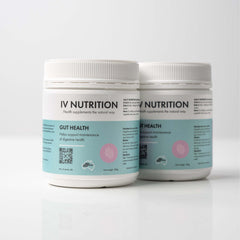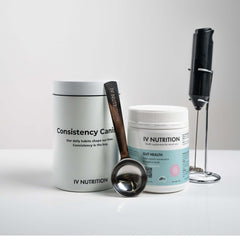What Are the Three Types of IBD? A Deep Dive into Inflammatory Bowel Disease with a Gut-Healthy Twist
If your gut’s been sending you more red flags than a dating app full of bad bios, you might be wondering: What exactly is going on in there? More specifically—what are the three types of IBD?
Inflammatory Bowel Disease (IBD) isn’t just one condition. It’s a group of chronic, immune-driven diseases that cause ongoing inflammation in the digestive tract. While most people are familiar with Crohn’s disease and ulcerative colitis, a lesser-known third type—microscopic colitis—deserves some spotlight, too.
In this evidence-backed, slightly cheeky (but thoroughly clinical) guide, we’ll break down the three main types of IBD, what makes them different, how they’re diagnosed and treated, and why your gut bacteria (and fiber!) may be more important than you ever realized. We’ll also introduce a rising star in gut health: virgin-manufactured sugarcane prebiotic fiber, with a chance to try it for free. Yep, we said free.
What Is Inflammatory Bowel Disease (IBD)?
IBD is a term used to describe chronic inflammation of the gastrointestinal (GI) tract, driven by an abnormal immune response. Unlike IBS (Irritable Bowel Syndrome), which is functional and doesn’t cause damage to gut tissue, IBD involves structural damage to the lining of the GI tract.
IBD includes:
-
Crohn’s disease
-
Ulcerative colitis
-
Microscopic colitis
These diseases affect different parts and layers of the gut, with varying symptoms, complications, and treatment strategies. Let’s explore each type in detail.
1. Crohn’s Disease: The GI Wildcard
Overview
Crohn’s disease (CD) is the chameleon of IBD—it can affect any part of the GI tract, from mouth to anus, but most commonly involves the end of the small intestine (ileum) and the beginning of the colon.
What sets it apart? It causes transmural inflammation, meaning it affects all layers of the bowel wall.
Common Symptoms
-
Cramping and abdominal pain
-
Chronic diarrhea (often non-bloody)
-
Weight loss and malnutrition
-
Fatigue
-
Mouth sores
-
Anal fistulas or abscesses
Complications
-
Strictures (narrowing of the bowel)
-
Fistulas (abnormal connections between organs)
-
Malabsorption and nutrient deficiencies
-
Increased colon cancer risk [Crohn’s & Colitis Foundation]
Diagnosis
-
Colonoscopy with biopsy
-
CT/MRI enterography
-
Fecal calprotectin levels [Mayo Clinic]
-
Blood tests for inflammation (CRP, ESR)
2. Ulcerative Colitis: The Colon-Only Culprit
Overview
Ulcerative colitis (UC) is a type of IBD that affects only the large intestine (colon) and rectum. Unlike Crohn’s, it causes superficial inflammation, limited to the innermost lining of the colon.
It typically begins in the rectum and spreads upward in a continuous pattern.
Common Symptoms
-
Bloody diarrhea
-
Urgency to defecate
-
Tenesmus (feeling of incomplete evacuation)
-
Abdominal cramping
-
Weight loss
-
Fatigue
Complications
-
Severe bleeding
-
Toxic megacolon
-
Perforated colon
-
Colon cancer (especially with long-term inflammation) [American Gastroenterological Association]
Diagnosis
-
Colonoscopy with biopsy
-
Stool studies to rule out infection
-
P-ANCA blood test (may be positive in UC)
-
Fecal calprotectin
3. Microscopic Colitis: The Invisible Inflammation
Overview
Microscopic colitis (MC) is the quiet third member of the IBD family. It doesn’t show up on colonoscopy visually—you need a biopsy to see the inflammation under a microscope, hence the name.
There are two subtypes:
-
Collagenous colitis (thickened collagen band)
-
Lymphocytic colitis (increased lymphocytes)
Common Symptoms
-
Chronic, watery diarrhea (non-bloody)
-
Bloating
-
Mild abdominal discomfort
-
Unexplained weight loss (in some cases)
Often misdiagnosed as IBS, this condition disproportionately affects older adults and women.
Risk Factors
-
NSAID use
-
Proton pump inhibitors (PPIs)
-
Smoking
-
Autoimmune diseases like celiac or thyroid disease [Cleveland Clinic]
Diagnosis
-
Colonoscopy with random biopsies
-
Stool tests to rule out infections
-
Often diagnosed after years of unexplained diarrhea
Table: Quick Comparison of the Three Types of IBD
| Feature | Crohn’s Disease | Ulcerative Colitis | Microscopic Colitis |
|---|---|---|---|
| Affected Area | Anywhere in GI tract | Colon and rectum only | Colon only |
| Inflammation Pattern | Patchy (skip lesions) | Continuous | Microscopic |
| Layer Involved | All layers (transmural) | Mucosal lining only | Mucosal (seen via biopsy) |
| Blood in Stool | Less common | Very common | Rare |
| Diarrhea Type | Often non-bloody | Bloody, urgent | Watery, non-bloody |
| Visible in Colonoscopy | Yes | Yes | No (requires biopsy) |
What Causes These Types of IBD?
While each type presents differently, they share overlapping causes:
1. Genetic Predisposition
Over 200 gene mutations have been linked to IBD, including NOD2, ATG16L1, and IL23R [Nature Reviews Gastroenterology].
2. Immune System Dysfunction
IBD is considered an autoimmune-related disease, where the immune system attacks the GI tract inappropriately.
3. Microbiome Imbalance (Dysbiosis)
A recurring theme in IBD research: disrupted gut bacteria equals increased inflammation. IBD patients often lack diverse, fiber-loving microbes, especially Firmicutes and Bifidobacteria [Cell Host & Microbe].
The Role of Diet in IBD
No, diet doesn’t cause IBD, but it can trigger flares or soothe symptoms. The standard Western diet—low in fiber, high in ultra-processed junk—is a gut microbiome nightmare.
What helps?
-
A diet rich in plant-based fiber
-
Omega-3 fatty acids (from fish or flaxseed)
-
Low FODMAP diets during flares
-
Fermented foods (in remission stages)
But there’s one standout category you should definitely consider…
Why Prebiotics Matter in IBD (And the Fiber Your Gut Will Love You For)
You’ve heard of probiotics, but prebiotics are the unsung heroes—they’re food for your good bacteria.
When you eat prebiotics, you nourish microbes that produce short-chain fatty acids (SCFAs), especially butyrate, which:
-
Reduces gut inflammation
-
Heals intestinal lining
-
Strengthens the gut barrier
-
Regulates immune response [American Journal of Clinical Nutrition]
But not all prebiotics are created equal...
Spotlight: Virgin-Manufactured Sugarcane Prebiotic Fiber from IV Nutrition
If you’re looking for a gentle, clinically effective prebiotic to support your gut in IBD recovery or remission, look no further than IV Nutrition’s sugarcane-based fiber.
Why It Works:
-
Made from virgin sugarcane fiber, not post-extraction leftovers
-
High in natural prebiotic compounds that selectively feed good microbes
-
Promotes butyrate production
-
Supports a more diverse and balanced microbiome
-
Zero additives, zero filler—just pure gut nourishment
Exclusive Offer
Ready to try it? Get 100% off your first tub when you subscribe using this link:
👉 Grab Your Free Tub Now
Seriously. Your colon will thank you.
Diagnosing and Treating IBD: What to Expect
Diagnosis can involve a combo of tools:
-
Colonoscopy + biopsy
-
Stool tests (calprotectin, lactoferrin)
-
Blood tests (CRP, ESR, anemia markers)
-
Imaging (CT enterography, MRI)
Medical Treatments
| Treatment Class | Common Medications | Purpose |
|---|---|---|
| Anti-inflammatories | Mesalamine, sulfasalazine | Reduce inflammation |
| Corticosteroids | Prednisone, budesonide | Short-term inflammation control |
| Immunomodulators | Azathioprine, 6-MP | Suppress immune activity |
| Biologics | Infliximab, adalimumab | Target specific immune pathways |
| Antibiotics | Metronidazole, ciprofloxacin | For fistulas, abscesses (Crohn’s) |
Living with IBD: Beyond the Prescription
IBD is a lifelong condition, but with a well-rounded strategy, remission is achievable.
Lifestyle Tips:
-
Track your symptoms and food using apps like MyIBD Care
-
Avoid NSAIDs, smoking, and alcohol
-
Incorporate prebiotic fiber (again, fiber = friend!)
-
Practice stress reduction: meditation, CBT, yoga
-
Consider nutritional therapy or elemental diets during flares
Final Thoughts: So, What Are the Three Types of IBD?
Let’s recap:
-
Crohn’s Disease – Inflammation anywhere in the GI tract, all layers affected.
-
Ulcerative Colitis – Limited to the colon and rectum, affects surface lining.
-
Microscopic Colitis – Invisible without a microscope, causes chronic watery diarrhea.
Each type is unique, but they share a common thread: inflammation driven by immune dysfunction and microbiome imbalances.
And while medications are often essential, gut healing is not complete without dietary and lifestyle support. That’s where prebiotic fibers—like IV Nutrition’s virgin sugarcane prebiotic—can be an absolute game-changer.





